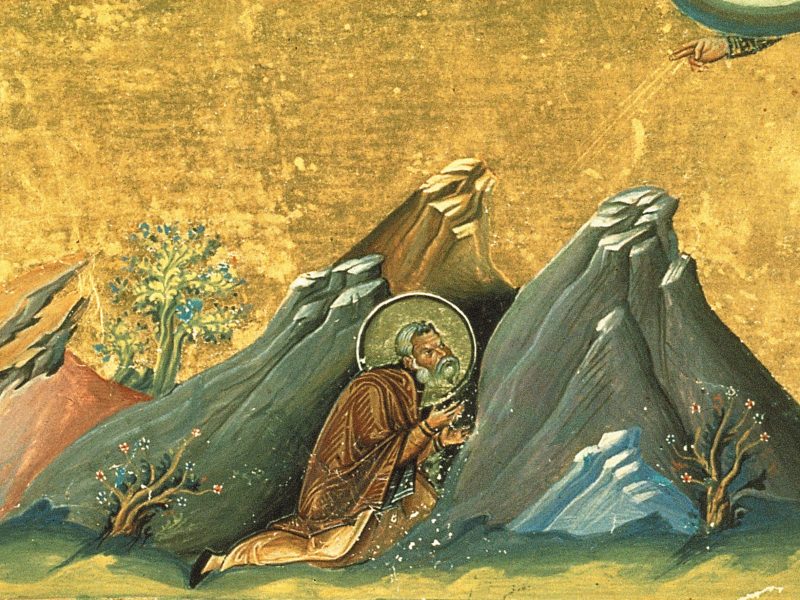by Gideon Lazar
It is frequently argued today that Genesis 1-11 is mythological, while Genesis 12-50 is historical. This is because most Catholics rightly do not wish to abandon a historical understanding of the Patriarchs. Indeed, the story of Joseph is closely tied to the exodus which itself is closely tied to the whole story of Israel, which then sets the background for the New Testament. If we throw out the Patriarchs, we risk throwing out the whole of the Biblical narrative. However, many of these same Catholics wish to downplay the historical meaning of the primeval history of Genesis 1-11. Can this be done though?
Humanae Generis
One argument for such a reading is that there is apparent magisterial support for it. Pius XII in Humani Generis says of the Genesis 1-11 that they “properly speaking not conforming to the historical method used by the best Greek and Latin writers or by competent authors of our time” (HG 38). However, Pius XII immediately follows this by saying that they “do nevertheless pertain to history in a true sense, which however must be further studied and determined by exegetes.” Thus, Pius rules out the view that Genesis 1-11 is not historical, only that it does not conform to secular standards of history. This is certainly true. The details and descriptions used by Moses in Genesis are for theological reasons. How exactly the flood or the Tower of Babel occurred are questions for scientists and historians. What is important for theology is that they did happen, and the details of these events that are theologically relevant have been highlighted by Moses. In addition, Pius says that we ought to use exegesis to determine their precise historical value, so let’s take a look at that.
Genesis 11
It is not under dispute by faithful Catholics that the Abraham narrative is intended to be historical. We will therefore use this as our starting point. Where does the Abraham narrative begin then? It does not begin in Genesis 12:1, as is frequently thought. Abraham first appears in Genesis 11:26. It is in Genesis 11 that we learn important details about Abraham such as that he is from Ur, he moves to Haran, has a wife named Sarai, and has a nephew named Lot. All of these are important to the biblical narrative. Thus, if we are to be consistent, we must say that the historical value of Genesis begins at least with Genesis 11:26. However, this comes in the middle of a genealogy. This genealogy does not end until Genesis 11:32 when Terah dies at the age of 205. Thus, in order to be consistent, we must accept the whole genealogy of Genesis 11 to be historical.
There are also internal clues that this genealogy is intended to be taken as historical. It gives the age at which each father begets a son. This creates a chronological lock from Shem to Abraham. Even if there are genealogical gaps, there cannot be chronological gaps here. For example, we read “when Shem was a hundred years old, he became the father of Arpachshad” (Gen 11:10). There could have actually been 20 generations in between Shem and Arpachshad and Arpachshad still would have been born when Shem was 100. There is a chronological lock here. Moses would only give us such a clear chronological lock if he intended us to take it chronologically.
This means that everything back to Shem, the son of Noah, must be taken in a historical and chronological if we are to take the Abraham narrative as historical. Verse 10 of this genealogy also mentions the flood occurring two years earlier, so this gives us a date for the flood. St. Peter tells us that only eight humans survived this flood (1 Pet 3:20). This alone should serve the prove the historical reading of Genesis 1-11.
Genesis 5
Some may object that this only gives us Genesis 11 and perhaps the flood as historical, but nothing before that. However, we have just seen that the genre of genealogy should be taken as historical. We see the same genre with the same chronological lock in Genesis 5. This genealogy gets us all the way back to Adam. That is, there is a strict two-to-three-thousand-year chronological lock between Adam and Abraham. While the exact length can be disputed as different manuscripts give different numbers here, that the intention of Moses in the original autograph was to be historical is certain. This is in accord with the exegetical method laid out by the Second Vatican Council, which says in Dei Verbum that “the interpreter of Sacred Scripture, in order to see clearly what God wanted to communicate to us, should carefully investigate what meaning the sacred writers really intended” (DV 12). If Moses intended these passages to be historical, we ought to take them that way.
Genesis 1
This brings us back to the creation of Adam on the sixth day in Genesis 2. This could be enough on its own given that we have established the traditional chronology of the world. However, it will be worth taking a look at the first chapter of Genesis as well to see if it is historical. The precise historical meaning of this chapter is harder to probe given the poetic nature of its style. However, it does contain chronological markers. The Hebrew word yom almost always means a 24-hour day unless context specifies otherwise. Here the context only serves to strengthen the ordinary reading though, since we are repeatedly told that we move from one day to the next through the passing of evening and morning.
One detail used by many exegetes to argue that these are not literal days is that the sun and moon are not created until the fourth day. Thus, there is nothing to mark a day. However, we are told that God created light and darkness and that “God called the light Day, and the darkness he called Night” (Gen 1:5). So, for the first three days God has light and darkness alone mark day and night, and only on the fourth day does He create the sun and moon to mark day and night instead as sources of lights. While this could seem odd, it likely has theological significance beyond the scope of this article. In considering only the literal sense here, it seems the weight is in favor of six 24-hour days.
Conclusion
In order to be consistent readers of scripture then, we ought to read Genesis 1-11 as true history with the chronology provided to us by it. This can be seen both by the literary context and its close connection to the larger narrative of scripture, most especially the Abraham narrative. While there is certainly much allegory and theological significance in these chapters, this does not serve to destroy the historical meaning of the chapters, but rather is theological meaning founded upon true history.

